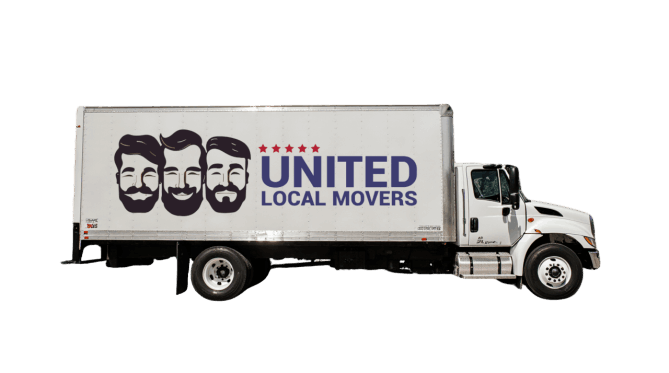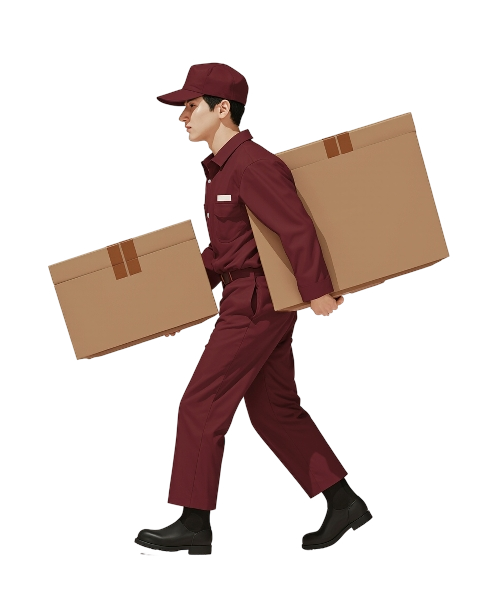When most people plan a move, they think about packing, loading, and scheduling — but not always about the weather. Yet weather can be one of the biggest factors affecting your move. Whether you’re facing scorching heat, icy roads, or heavy storms, a well-prepared plan can protect your belongings, keep your crew safe, and prevent costly delays. Smart weather planning isn’t just for winter or hurricane season — it’s essential year-round.
Why Weather Can Make or Break Your Move
Unlike many everyday activities, moving involves logistics that are extremely sensitive to outdoor conditions. From slippery driveways to overheated equipment, weather can impact every step of the relocation process.
- 🌡️ Heat: Can cause fatigue, equipment strain, and damage to sensitive items.
- ❄️ Snow and ice: Make loading and driving more dangerous.
- ⛈️ Storms: Lead to delays, damage, and last-minute rescheduling.
Building weather flexibility into your moving plan helps keep everything on track, even if Mother Nature doesn’t cooperate.
Step One: Know the Seasonal Risks
Every season brings unique weather challenges that can affect your move. Understanding them ahead of time lets you plan accordingly.
Summer Moves (June–August)
- 🔥 High heat and humidity can make loading and unloading physically demanding.
- 🧊 Electronics, candles, and perishables can be damaged in hot trucks.
- ☀️ Afternoon thunderstorms are common in many states.
Winter Moves (December–February)
- ❄️ Snow and ice can make sidewalks and driveways slippery.
- 🚛 Road closures or black ice can delay delivery.
- 🧤 Extra protective gear and equipment are required.
Spring and Fall
- ⛈️ More unpredictable storms, including wind and rain.
- 🍂 Wet leaves can make surfaces slick during loading.
- 🌬️ Cooler temps are ideal for physical work, but weather can shift fast.
Checking historical averages for your region can help you schedule during safer, more predictable windows.
Planning for Extreme Heat
Summer is the most popular moving season — but it’s also when heat-related problems are most common. To protect your health and your belongings:
- 💧 Start early in the morning to avoid midday heat.
- 🧃 Keep cold water on hand for everyone involved.
- 🧊 Protect sensitive items like electronics, candles, and plants from heat damage.
- 🚚 Park the truck in the shade when possible.
- 🧺 Load heat-sensitive items last and unload them first.
Remember that moving in heat requires more breaks. Fatigue and dehydration can increase the risk of accidents.
Dealing With Snow and Ice
Winter moves can be challenging, but with proper preparation, they can also be safe and efficient. Key steps include:
- ❄️ Shovel and salt walkways, driveways, and steps before moving starts.
- 🧤 Wear warm, non-slip boots and layered clothing.
- 🚛 Check your truck’s tires and carry snow chains if needed.
- 🚨 Allow extra travel time in case of road closures or slow conditions.
- 🔥 Protect furniture with extra padding and waterproof covers.
Even light snow can turn ramps and steps into slipping hazards. A few extra minutes of preparation can prevent injuries and damage.
Storm-Proofing Your Move
Rain, thunderstorms, or tropical systems can strike when you least expect it. To keep your belongings dry and your schedule intact:
- 🌧️ Keep tarps and plastic sheeting handy for covering boxes and furniture.
- ☔ Wear waterproof clothing with good traction.
- 🚚 Line truck floors with blankets or pads to catch drips.
- 💬 Keep communication open with your moving team in case of delays.
- 🪜 Avoid moving large appliances during lightning storms.
Storm delays may not always be avoidable, but good planning can minimize their impact.
Checking Weather Forecasts Strategically
Checking the weather once isn’t enough — forecasts can change quickly. Smart movers:
- 📅 Monitor forecasts starting 7–10 days before the move.
- 📲 Use reliable weather apps with hourly updates.
- 🛰️ Set up alerts for severe weather watches or warnings.
- 🧭 Build flexibility into pickup and delivery windows if possible.
Knowing about bad weather even a few hours in advance can help you adjust your schedule or route.
Protecting Your Belongings From the Elements
Rain, heat, or snow can damage furniture, electronics, artwork, and even boxes. Prevent this by:
- 📦 Using plastic wrap, shrink wrap, or waterproof moving blankets.
- 📮 Keeping boxes off the ground when loading during wet weather.
- 🧊 Avoiding leaving items inside a hot truck for extended periods.
- 🪑 Using mattress bags, sofa covers, and sturdy tape.
Even short exposure can warp wood furniture, damage cardboard boxes, or ruin delicate electronics.
Safety Considerations for Drivers
Weather isn’t just about your belongings — it’s also about driving safely. Key tips:
- 🚘 Drive slower in rain, snow, or fog.
- 💡 Keep headlights on for better visibility.
- 🛑 Leave extra space between vehicles.
- 🌬️ Be cautious of high winds, which can push large trucks sideways.
Even experienced drivers should allow for extra time in adverse conditions. Rushing through a storm can be dangerous.
Backup Plans and Flexibility
Sometimes, despite your best efforts, the weather just doesn’t cooperate. Having a backup plan can save your move:
- 🔄 Reschedule with your movers if conditions are dangerous.
- 📦 Use temporary storage if delivery is delayed.
- 🏡 Have an alternate indoor loading/unloading plan.
- 📞 Keep your moving company informed of changes immediately.
Companies like United Local Movers often offer flexible rescheduling policies for weather-related delays.
Insurance and Liability Considerations
Weather-related damages may not always be covered by basic moving insurance. Before your move:
- 🧾 Review your valuation coverage and limitations.
- 💬 Ask about coverage for rain, flood, or storm damage.
- 🔐 Consider extra insurance for high-value items.
A few extra dollars in insurance can protect thousands of dollars in belongings.
When It’s Best to Delay the Move
Sometimes the smartest weather decision is to wait. You may want to delay if:
- 🌪️ Severe storms or hurricanes are forecast
- ❄️ Road closures or blizzard warnings are active
- 🔥 Heat advisories make heavy lifting dangerous
Delaying by even a few hours can make the difference between a smooth move and a nightmare scenario.
Professional Movers and Weather Contingencies
Professional moving companies like United Local Movers have experience handling all types of weather conditions. They use specialized equipment, waterproof materials, and scheduling flexibility to ensure your relocation stays on track, rain or shine.
Moving Smart in Any Weather
Weather is unpredictable, but your moving plan doesn’t have to be. By understanding seasonal risks, monitoring forecasts, protecting your belongings, and staying flexible, you can keep your move on schedule and stress-free — even when the forecast looks rough.
With United Local Movers, your relocation becomes safer, faster, and weatherproof.





